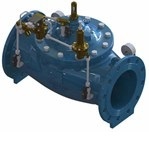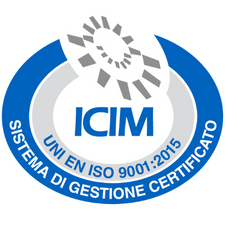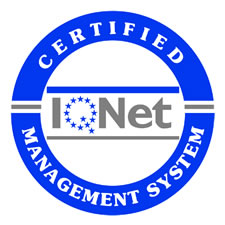
Product overview
The pressure reducing / solenoid valve is controlled by a pressure reducing control and an electrical (on/off) solenoid. The pressure reducing control is normally open,held open by an adjustable spring set to maintain a constant discharge pressure from the main valve. When solenoid is closed, the main valve is closed drip-tight. When
the solenoid control is open, the valve performs the required pressure reducing function and it is controlled by the pressure reducing control. As downstream pressure (outlet) increases to pressure reducing set-point, the control throttles toward closed, restricting flow through the control tubing. This action increases pressure in the main
valve cover chamber; modulating the main valve towards closed an appropriate amount, maintaining the desired outlet pressure. Closing speed is regulated by an adjustable needle valve. As the downstream pressure (outlet) decreases, the pressure reducing control throttles toward open, increasing the flow through the control tubing. This
action decreases pressure in the main valve cover chamber; modulating the main valve towards open an appropriate amount, maintaining the desired outlet pressure.
Additional features
– Pressure sustaining. The valve maintain a minimal inlet pressure;
– Solenoid on-off control function. A remote controller switch on/off the valve;
– Check function. When outlet became higher than inlet, the function prevent back flow;
– Reverse flow: main valve totally open if outlet is higher than inlet;
– Main valve totally open when inlet pressure rich a minimal and adjustable value;
– Two adjustable pressure outlet value. The switch could be through a manual override, or by electrically remote solenoid control or with an hydraulic adjustable flow control;
– Flow rate control;
– On-off float level control valve with outlet orifice to control the flow and prevent cavitation.





